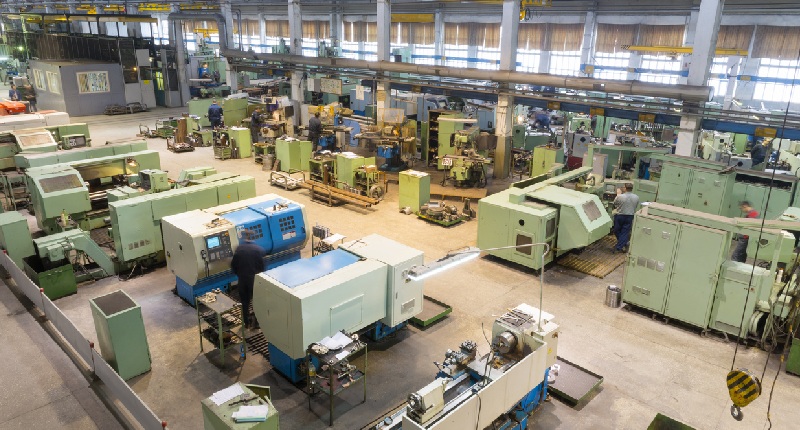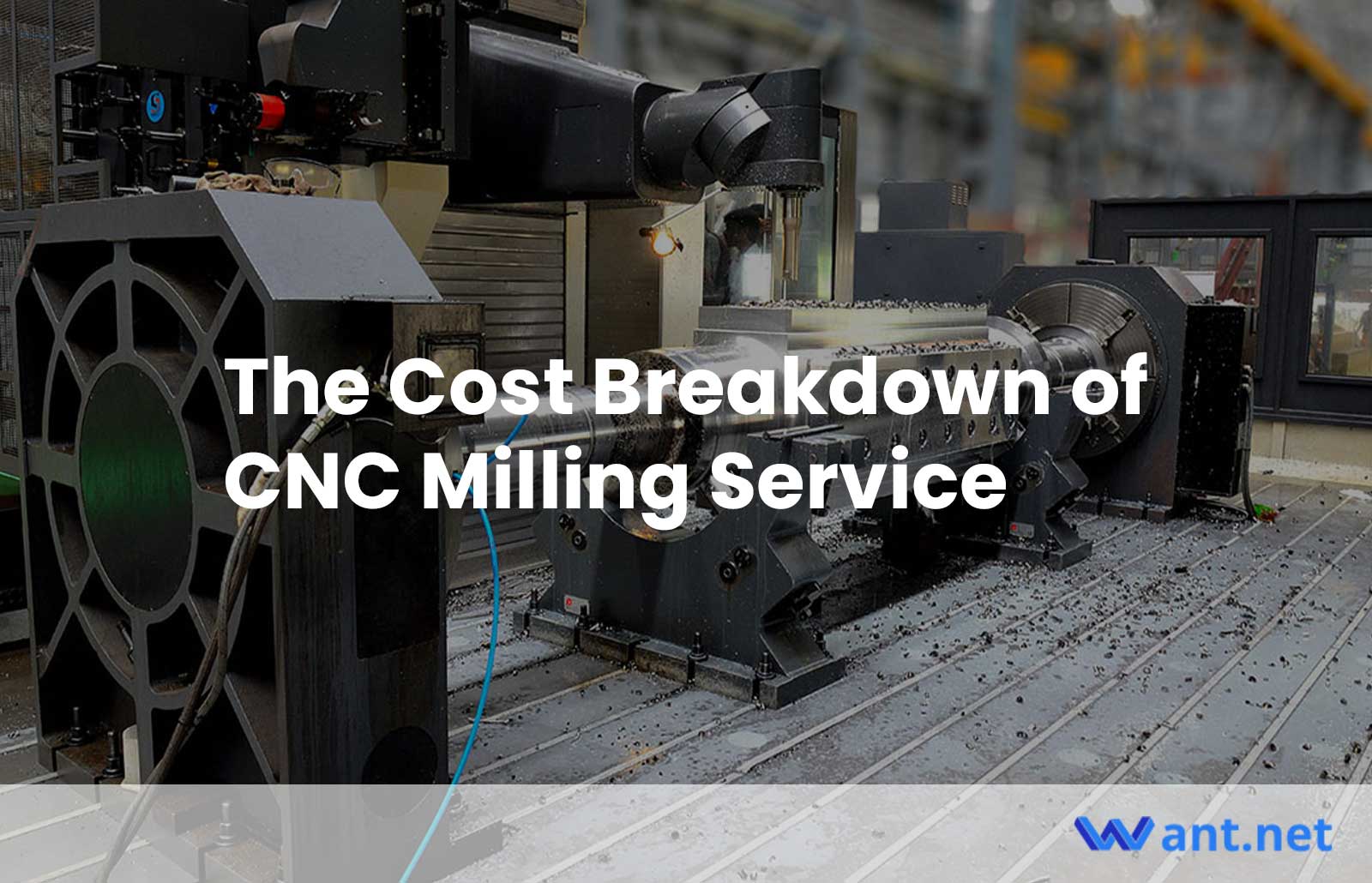If you’ve ever sought out CNC milling services for custom parts, you’re likely aware that the price tag can sometimes be a cause for surprise. When faced with the total quote, clients often find themselves with numerous questions about the pricing structure of milling shops. In this article, we aim to demystify the various factors that contribute to the cost of CNC milling jobs.
What is CNC Milling?
CNC milling stands for computer numerical control milling. It is a highly efficient CNC machining process that involves using computer-controlled machines and rotating cutting tools to remove material from a workpiece. This precise method enables the creation of custom-designed parts and products from a wide range of materials, including metals, plastics, glass, and wood.
The Advantages of CNC Milling
At Want.Net, we offer an array of benefits through our CNC milling services:
- Production of complex parts: CNC milling is adept at handling intricate designs and geometries.
- Cost-effective prototyping: It serves as an affordable option for creating prototypes and testing designs.
- Short-run production: Ideal for manufacturing small batches of parts.
- High dimensional tolerances: CNC milling ensures precise and accurate results.
- Smooth finishes: The process delivers excellent surface finishes for high-quality parts.
- Versatile material options: Our milling services cover a broad range of materials, providing flexibility for diverse projects.
- Competitive pricing: Want.Net offers cost-effective solutions for your milling needs.
- High-quality results: We guarantee 100% quality in every job we undertake.
- Fast delivery: Timely and efficient delivery of completed orders is our priority.
- Excellent after-sales support: Our dedicated customer service team ensures comprehensive assistance throughout your experience.
The Importance of Cost Calculation for Milling Services

Understanding the breakdown of machining costs is vital for several reasons. Consistent and accurate quoting establishes trust between clients and manufacturers, helps determine the minimum viable price point, allows manufacturers to manage profitability, and facilitates resource estimation for each job.
Now, let’s delve into the key components that contribute to the overall cost of CNC milling:
1. Stock Material
Selecting the appropriate stock material forms the foundation of milling costs. Typically, choosing the right stock material involves analyzing the geometry and maximum dimensions of the final part. Standard stock types, such as blocks or plates, are commonly used for milling operations. To ensure sufficient material, a few extra centimeters in thickness are added to accommodate the final part’s dimensions. Some milling services even offer the convenience of uploading your final part’s model, allowing their estimation program to recommend suitable stock materials.
2. Tooling
Tooling encompasses various elements, including jigs, fixtures, loading mechanisms, and tool holders, which are essential for securing the base elements of the milling process. These costs are highly individual and cannot be automatically estimated. However, most CNC milling shops possess flexible tooling that caters to approximately 80% of the parts they handle. To minimize costs, slight design modifications may be recommended to eliminate the need for additional tooling expenses.
3. Cutting Tools
Cutting tools and cooling liquids are consumables in CNC milling. While cooling liquid costs are usually negligible as they are recycled, cutting tools can significantly impact the overall milling price. The tooling cost varies depending on the material being machined. For instance, tools used for CNC milling acrylic or other soft plastics can be utilized for numerous operations due to the materials’ non-damaging properties. However, harder materials like titanium alloys accelerate tool wear, necessitating more frequent tool replacements. Additionally, specialized tools may be required for certain CNC operations, with diamond machining inserts being more expensive than carbide ones. CNC milling services typically providerecommended tool inserts for each material, which are factored into the total cost.
4. Machinist Salary
Labor costs for CNC milling involve the hourly rate of skilled machinists. In the case of larger parts, additional loading and unloading rates may be applied. Machinists are compensated not only for the actual machining time but also for crucial preparation tasks such as fixture setup and tool adjustments. These skilled professionals play a vital role in ensuring the success of the milling process.
5. Machine Costs
Machine tools, particularly advanced 5-axis CNC machining centers, consume significant power and may incorporate pneumatic systems for enhanced functionality. These factors contribute to electricity consumption and operational costs. Additionally, companies need to consider the depreciation expenses associated with their machines. All of these factors are combined to determine the machine tool rate per hour. If a part requires processing on multiple machine tools (such as milling and turning), the rates are aggregated and multiplied by the processing time accordingly.
6. Quality Costs
Different parts have varying quality demands, which directly influence the overall cost. Parts requiring higher precision, superior surface finishes, or featuring complex features tend to incur additional expenses. To account for this, some CNC shops incorporate a tolerance coefficient when providing online quotes. This coefficient encourages clients to carefully consider the desired quality level for their parts. By setting expectations and minimizing rework, this approach saves time and improves overall business efficiency. Additionally, clients can specify a percentage of allowable faulty parts when ordering a batch of parts. The lower the allowed percentage, the more thorough the machinist’s inspection process, resulting in increased costs.
7. Shipping
In our interconnected global world, it is common for clients from one region to seek CNC milling services from providers in another region. While numerous transport companies facilitate shipping, it is an additional cost to consider. Machine shop managers usually offer multiple shipping options with different price ranges. To provide an accurate estimate, clients must provide precise weight and dimension details of the final part. Although some shops may include shipping costs within the total price as a hidden charge, most CNC milling shops specify shipping charges separately. Some companies even offer the convenience of sending orders to trusted external shipping companies based on client preferences.
8. Profit Margin
While the specific profit margin is not disclosed to clients, it is a critical component of the overall pricing structure. Profit margins are incorporated into each aspect of the price calculation. A zero-profit margin indicates that the milling revenue is solely allocated to covering expenses and employee salaries, ensuring the business sustains itself. However, such a scenario limits growth and development opportunities. On the other hand, a higher profit margin generates additional revenue per order but may result in reduced demand due to higher prices.
How Want.Net Can Assist You
At Want.Net, we specialize in CNC milling services that cater to diverse needs. Our state-of-the-art CNC mills are capable of manufacturing parts in various shapes from soft metals like aluminum, harder metals like steel, and plastics such as acetal. Whether you require a single part, a small batch of prototypes, or full-scale production, we offer fast and cost-effective milling solutions.
To learn more about our CNC milling services or request a quote, please don’t hesitate to contact us. Our dedicated team is ready to assist you throughout the process.
Recommended Reads:
- AI Revolutionizing CNC Manufacturing
- Precision CNC Turning Services: Achieving Unparalleled Precision and Efficiency
- Precision 5-Axis CNC Machining in the Automotive Industry
- 9 Advantages of CNC Machining Over Conventional Machining
- How to Optimize Metal Machining Strategies for Improved Prototyping
- CNC Milling: Revolutionizing Automotive Part Production
Other Articles You Might Enjoy
- Revolutionizing Renewable Energy with CNC Machined Components
Introduction: Renewable Energy and CNC Machined Components Renewable energy harnesses power from natural sources such as the sun, wind, and water, making it a sustainable and eco-friendly alternative to traditional…
- Is Copper the Right Choice for Electrical Component CNC Machining? A Detailed Analysis
CNC Machining of Electrical Components Utilizing Copper In the field of electrical engineering, Computer Numerical Control (CNC) machining plays an integral role, particularly in the development and manufacturing of electrical…
- CNC Machining Brass vs. Bronze: Cost, Properties, and Applications Showdown?
Introduction to CNC Machining Brass vs. Bronze: Cost, Properties, and Applications Showdown? In this article, we delve into the debate between brass and bronze machining for an important manufacturing process…









